Mid-December 2016 (11th-20th)
/With the end of 2016 quickly approaching, birding observations continued to pour in as ‘listing enthusiasts’ tried their best to expand their annual species lists ahead of the coming holiday season. Reports of rarities continued pop up across Virginia Beach during mid-December with new-found highlights being CACKLING GOOSE, EURASIAN WIGEON & COMMON MERGANSER! Top birds this period also included continuing occurrences of rare GREATER WHITE-FRONTED GOOSE, ROSS’S GOOSE, PAINTED BUNTING, LE CONTE’S SPARROW and LARK SPARROW. First-of-season arrivals this period included our first-of-winter Red-necked Grebe (17 Dec) but this should be the last of the expected arrivals. Occurrences of late/lingering species this period included Cattle Egret (latest 11 Dec), Ruby-throated Hummingbird & Northern Parula (16 Dec), Yellow-breasted Chat & Black-and-white Warbler (18 Dec) and Blue-gray Gnatcatcher (20 Dec). WEATHER: What few leaves remained after 10 Dec all came down quickly afterward, and deciduous trees across the region are now fully barren in appearance. Mid-December reminded everyone of just how back-and-forth the winter season can be here in coastal Virginia, providing us with days where ice formed on waterways (and our windshields), where temperatures very nearly reached 80 degrees F, and absolutely everything in between! With a drop to 19 degrees F (our lowest temperature of the season), ice formed overnight on 15-16 Dec in most of the shallower neighborhood ponds, and along the upper reaches of tidal creeks as well. In just two days though, the temperature had managed to shift a remarkable 59 degrees, with 18 Dec reaching a record high for the date at Oceana NAS of 78 degrees F! This too was short-lived however, as by about 6 PM, a strong cold front moved through and we dropped right back down into the 30s overnight. Overall though, mid-December’s average daily high temperatures continued to fall, dropping slightly to 50.2 degrees F (-1.4 degrees from the early December period); average daytime dropped considerably, to 33.3 degrees F (-5.2 degrees). The previous 10-year average daily highs & lows for the mid-December period were 54.9 & 37.7 degrees F, respectively which puts this period in 2016 at -4.7 and -4.4 degrees when comparing to the 10-year averages. During the previous 10-year period, the maximum average daily highs & lows were 66.8 & 48.9 degrees F (2015). We had 5 days with measureable precipitation which amounted to a total of 0.58 inches, fairly evenly distributed across the days.
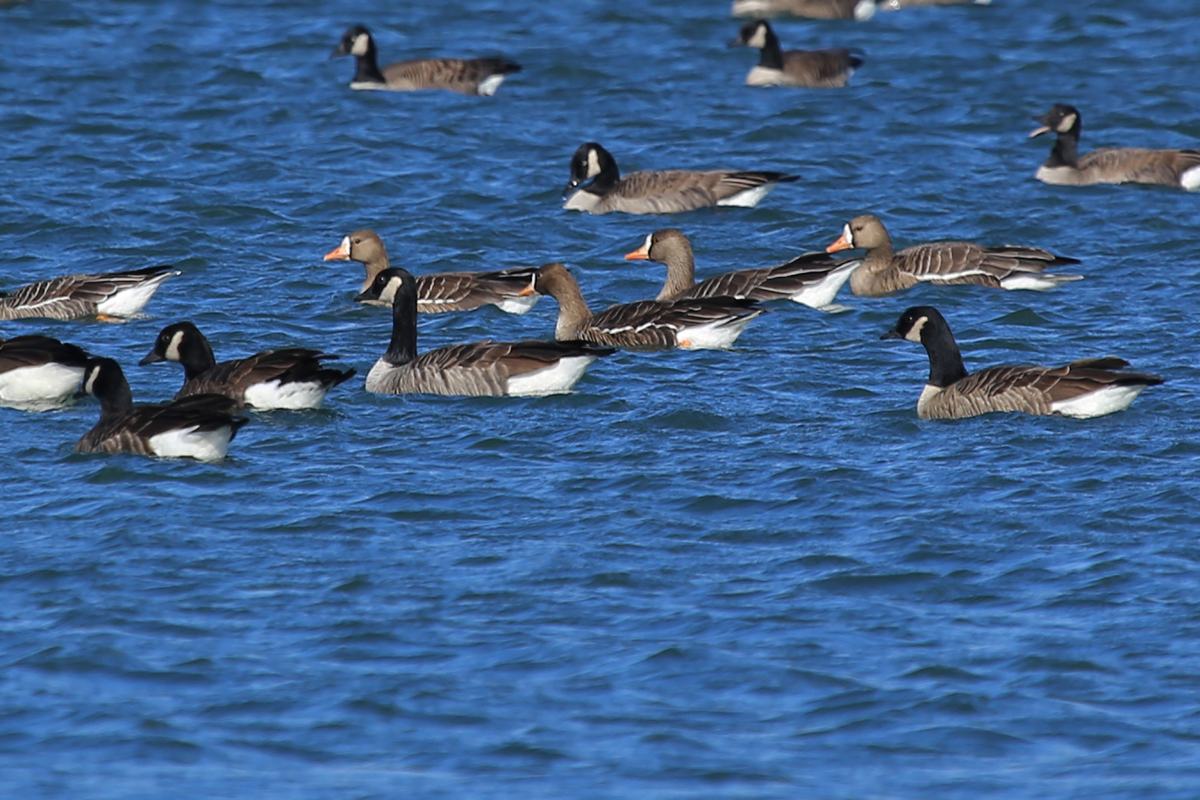
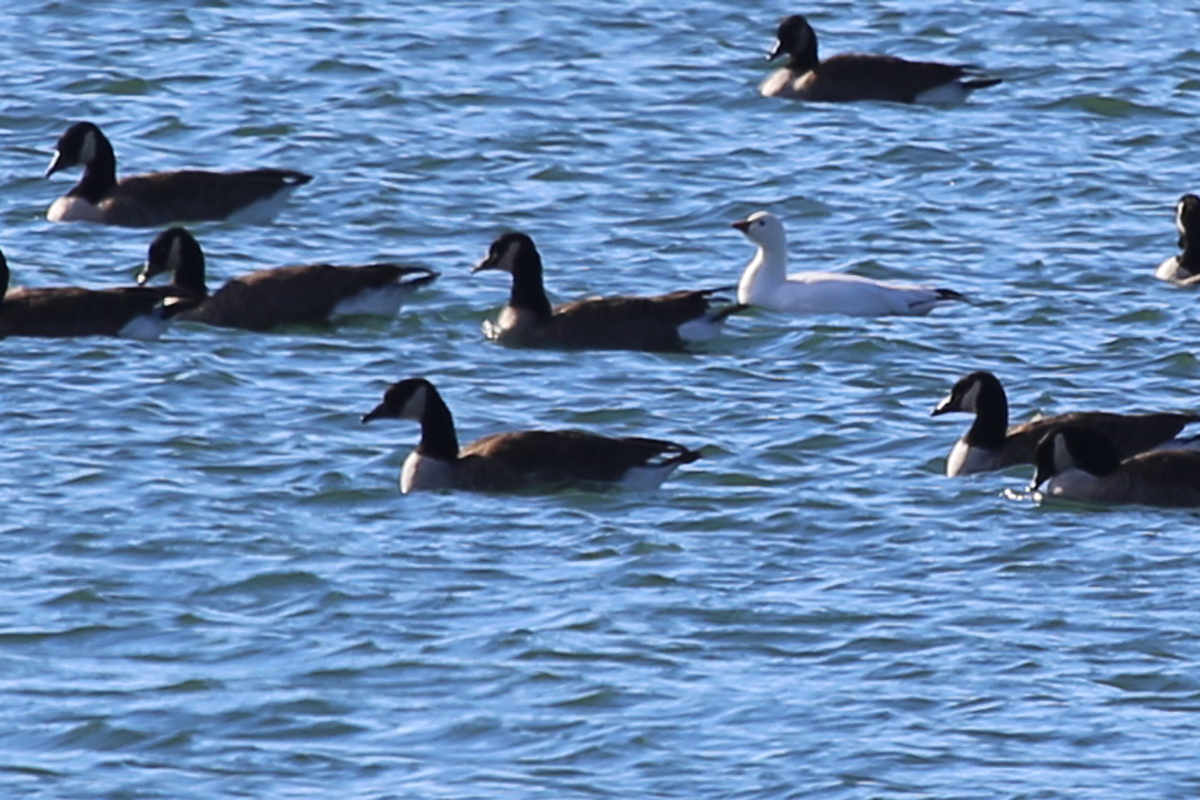
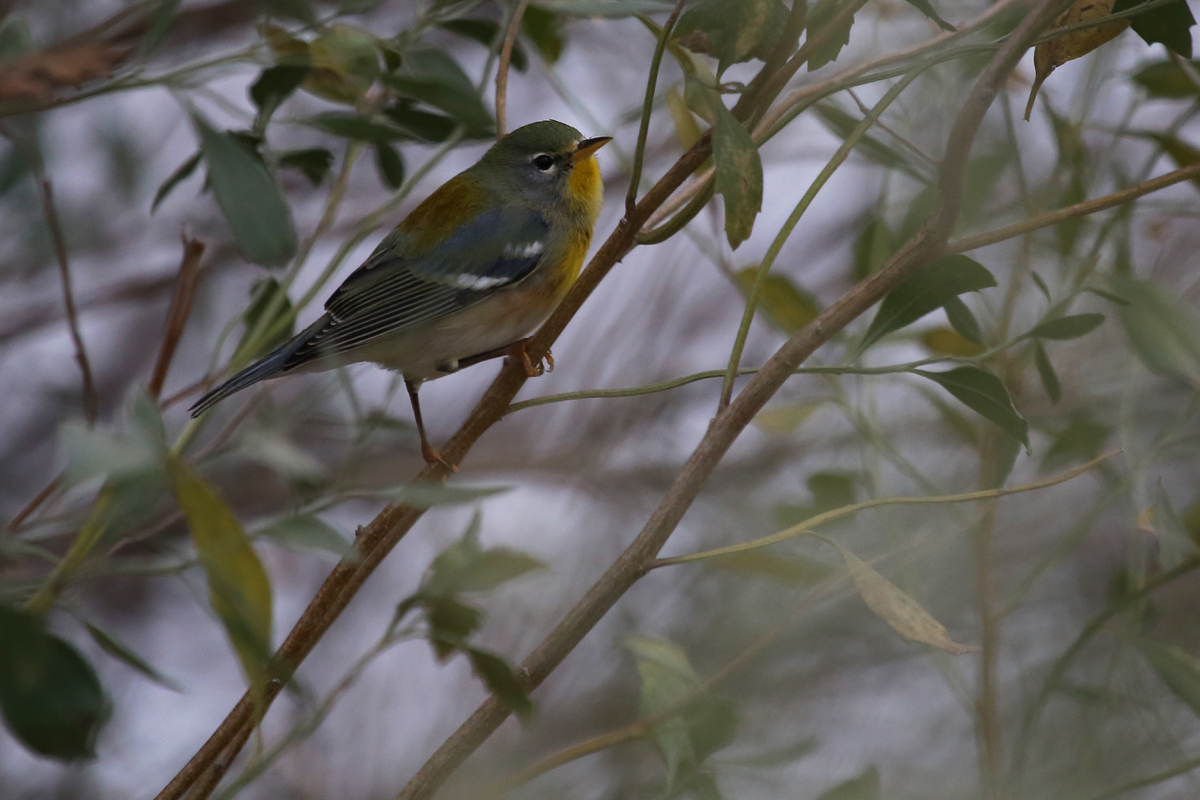
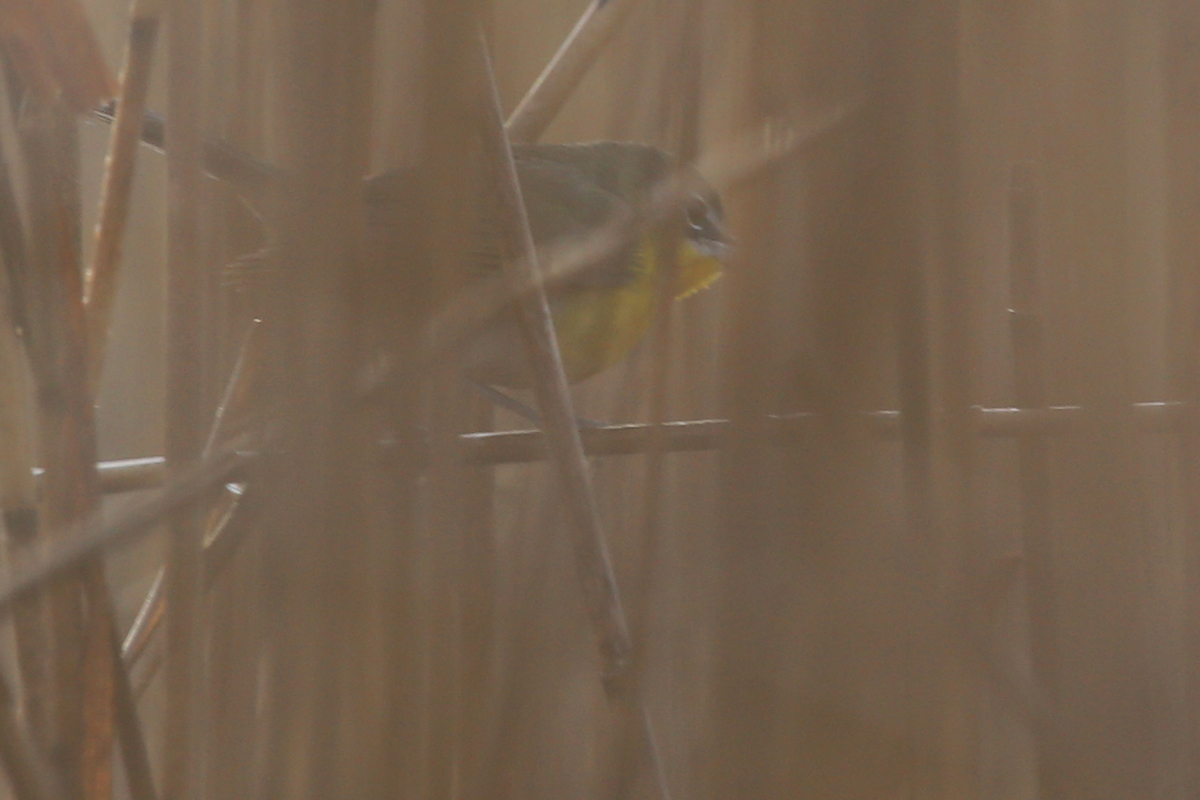

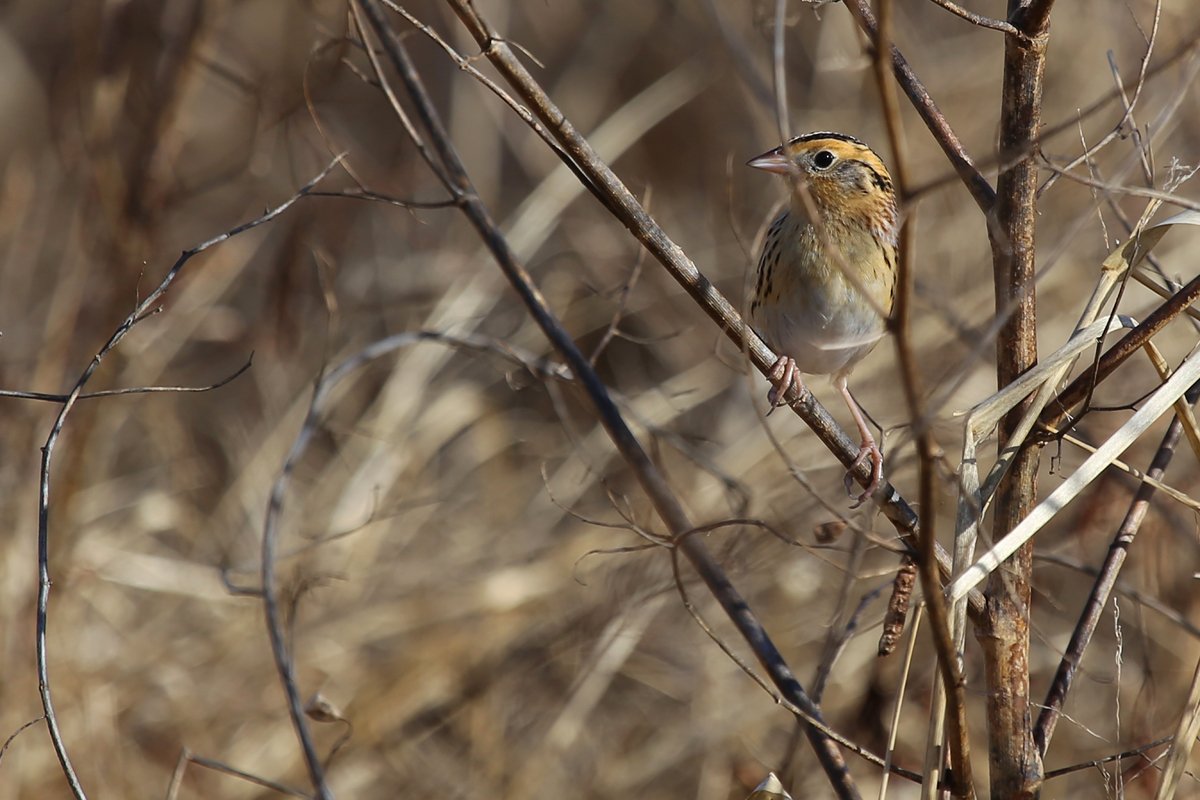

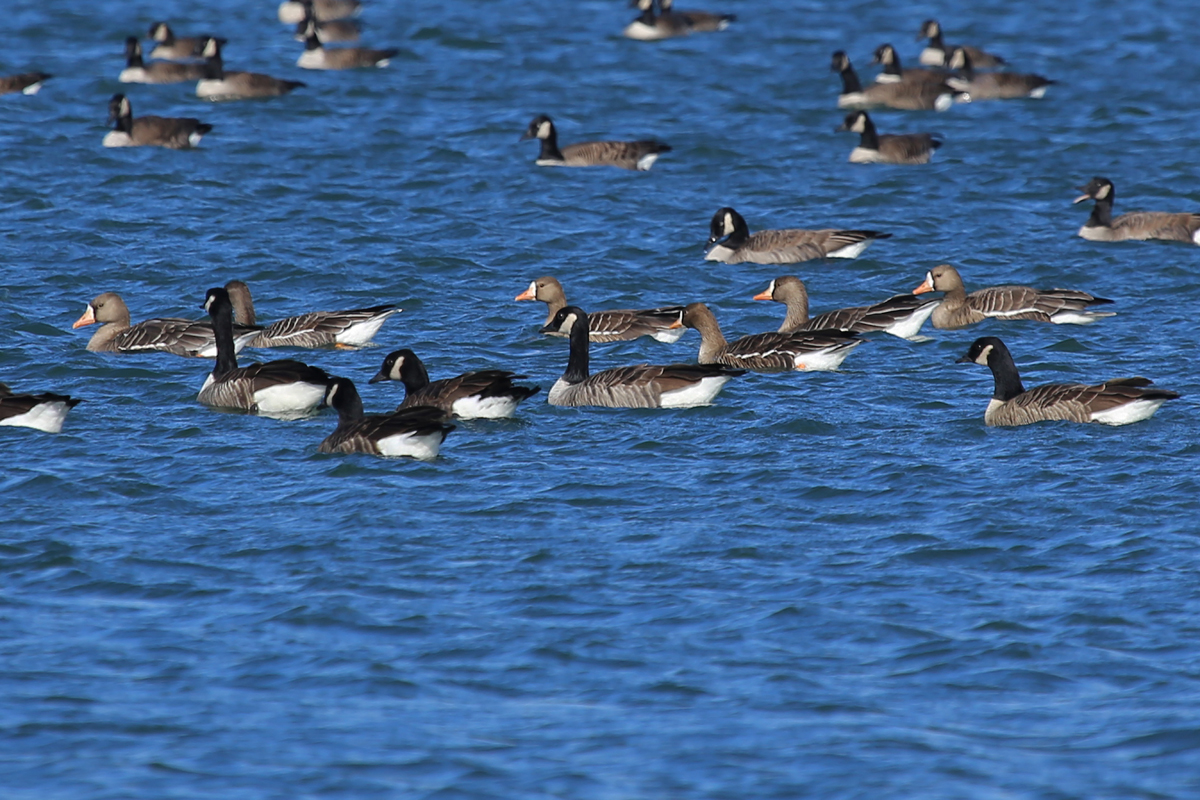
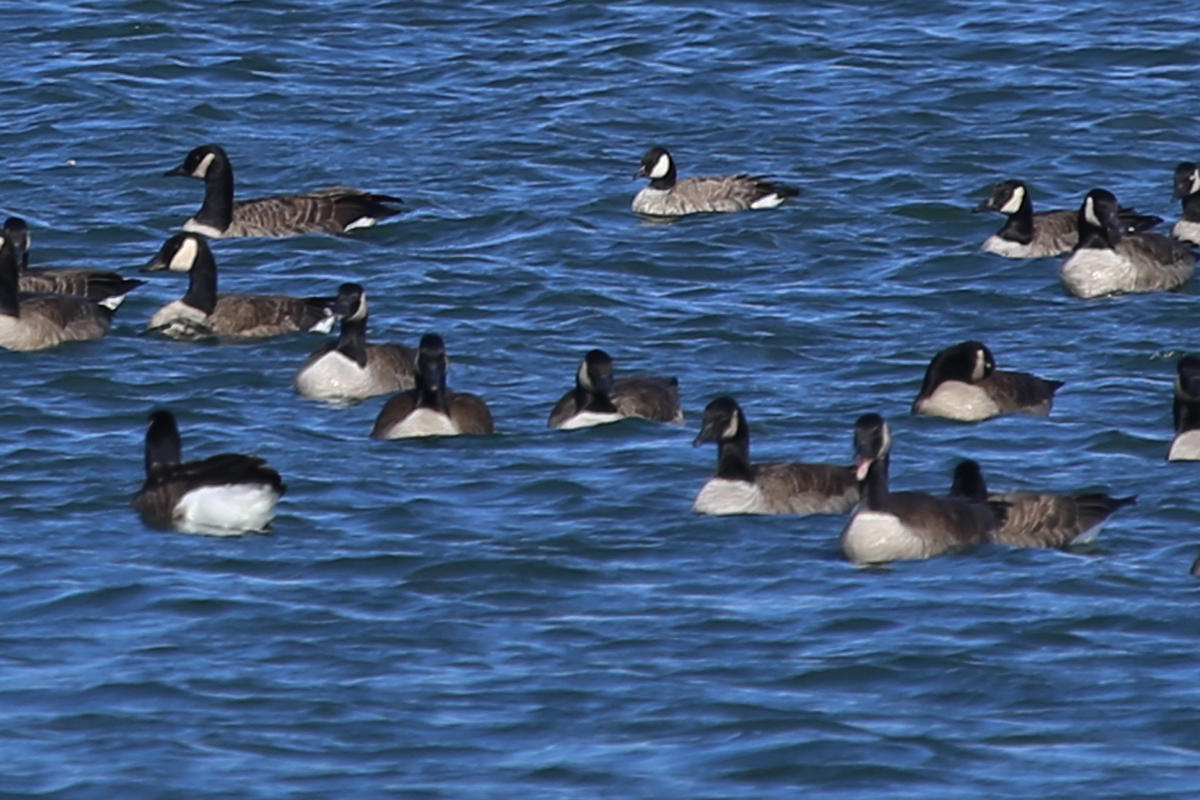
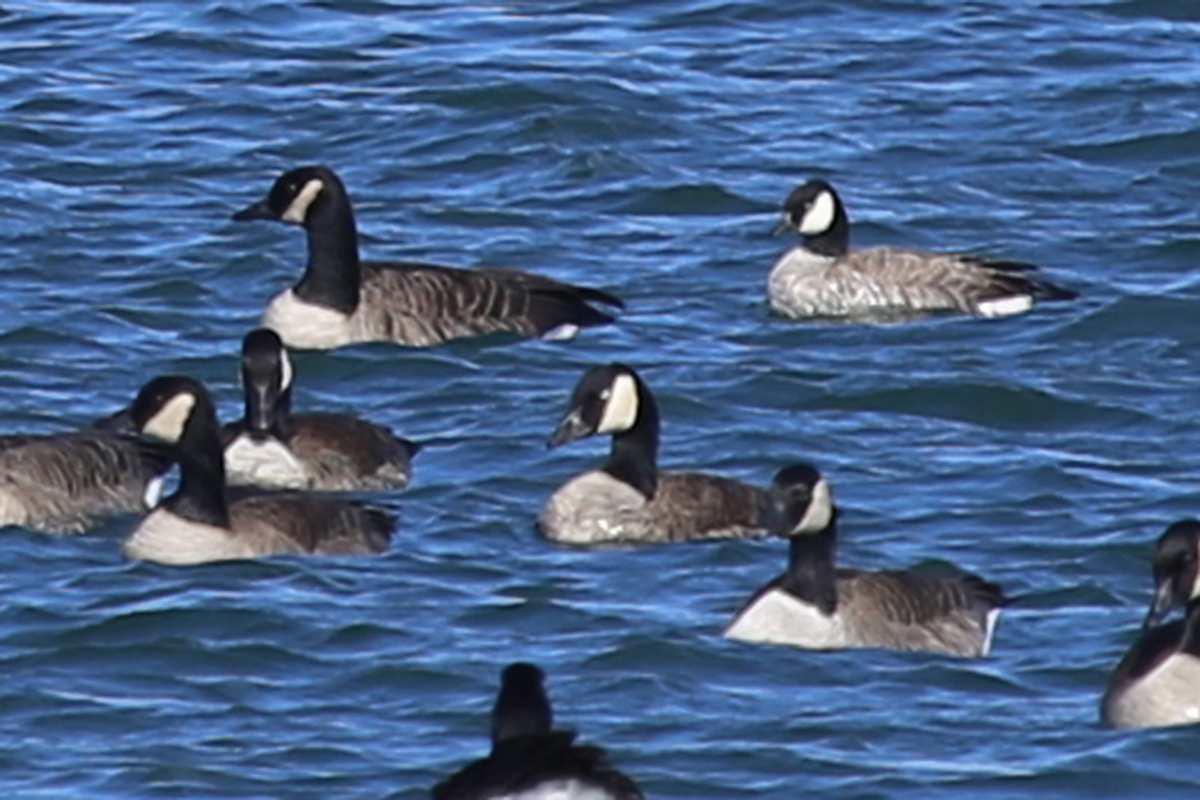
OBSERVATIONS: Over the past couple of months it has seemed that there is always something interesting being reported around the city, so it should come as no surprise that we had almost 200 eBird reports submitted for Virginia Beach over the last 10 days! With all the great finds that have taken place, locals & out-of-towners alike have flocked into the fields (and forests, lakes & even backyards) of Virginia Beach in hot (or cold depending on the day) pursuit! In fact, as a collective group of individuals, Virginia Beach now stands poised to pass up Accomack County and become the 2nd most active eBirding county/city in the entire state of Virginia! If you haven’t yet seen it before, click on this page over at eBird to view the actual rankings by checklist count (sortable also by variety of species)! Of course, after moving into 2nd, on this list it seems an impossible feat to ever hope to catch Fairfax County, which has roughly 3.5 times more checklists submitted than us, but, those folks give us a level of participation that is worth striving for. Perhaps this gap will be shortened as time goes on, but even if it doesn’t, you can bet that we’ll still be finding great birds down here on the coast!
Most notable this period was the continuance of 1 GREATER WHITE-FRONTED GOOSE that seemed to magically call in the cavalry overnight. While this individual was first observed 4 Dec (Sherwood Lakes / Julian Smith et al.), it persisted along the HRSD fields off Firefall Drive (11 Dec / Ellison Orcutt & Beth Oristian) and then was later discovered using the stormwater retention pond off Haviland Drive nearby (13 Dec / Ryan Graves; 14 Dec / Nancy Barnhart; 14 Dec / Mary Catherine Miguez; 14 Dec / Karen & Tom Beatty; 16 Dec / Tommy Maloney; 16 Dec / James Marcum & 16 Dec / Rob Bielawski) throughout this current period. However, birders leapt for joy when a group of 13…yes, 13 GREATER WHITE-FRONTED GEESE showed up near Princess Anne Lane on the morning of 18 Dec (Andrew Baldelli & Tracy Tate). It is not known whether the original individual joined & became the 13th member of a 12-goose flock, or if it stayed hidden elsewhere, with the 13 individuals all being new arrivals. Regardless of the answer, the entire group was observed and extensively photographed at very close range on Sherwood Lakes later in the day (initially spotted at this site by Lisa Rose while viewing a large flock of Canada Geese on the water with Timothy Barry, Rob Bielawski, Ernie Miller & Jason Strickland, then joined by Mary Catherine Miguez, Karen & Tom Beatty, and then later recorded by James Marcum, Pamela Monahan and on her second visit of the afternoon, Mary Catherine Miguez). With no sightings on 19 Dec, it seems the flock may have moved on, but on 20 Dec, a group of 12 was again detected at Sherwood Lakes (Karen & Tom Beatty) though it is not known what became of the 13th individual at this point.
As with the Greater White-fronted Goose, the reoccurring ROSS’S GOOSE (found initially 4 Dec by Julian Smith) at Sherwood Lakes also persisted throughout much of this period, mostly mixing in with other goose species. On 11 Dec, the Ross’s was observed by many as it floated along with the breeze atop the waters of Sherwood Lakes mixed in with a large flock of Canada Geese (Adam Bollinger & Jason Strickland, Louis Rajnys, Jeffrey Blalock & Clyde Wilson, Kathy Spencer, Bob Swiader, Rob Bielawski, and Tommy Maloney & Jason Schatti). Though it went unnoticed on 12 Dec, the Ross’s was again re-located along with the Greater White-fronted Goose on the waters of a stormwater retention pond off Haviland Drive on 13 Dec (Ryan Graves). It remained at this site the following day, 14 Dec, having been observed by several eBirders (Nancy Barnhart, Mary Catherine Miguez, Karen & Tom Beatty and Bob Swiader). After the 14th, the bird seemed to vanish, but was picked up again at Sherwood Lakes on 20 Dec (Karen & Tom Beatty and Pamela Monahan) for a final time this period.
Additionally, a third goose rarity made its first appearance in Virginia Beach for the year during the mid-December period! That species, being the CACKLING GOOSE, proves to be an incredibly difficult species to positively identify in the field. There was a great deal of reports submitted after the initial report hit the alerts on 11 Dec (Ellison Orcutt), with various observers listing numbers anywhere from 1-7 individuals mixed in with Canada Geese flocks at the same sites listed above in the Greater White-fronted & Ross’s Goose discussions. However, most reports were not documented photographically, which seems to be a must with this species to differentiate the very slight field marks that separate it from the smaller races of Canada Goose. Many, or even all, of the reports could be correct identifications, but the only definitively-documented reports thus far are of a single Cackling Goose on Sherwood Lakes, 18 Dec (Timothy Barry / Karen & Tom Beatty / Rob Bielawski / Mary Catherine Miguez / Ernie Miller / Lisa Rose / Jason Strickland and Pamela Monahan). It is presently unknown just how many Cackling Geese might be hanging around in Virginia Beach, but for those hoping to nail down the identity of one, it would be wise to shoot as many photographs of suspect birds as you can; many features can be obscured between large Cackling Geese & small Canadas, and a detailed analysis of the photographs is very necessary.
Also new among the species noted this period, and among waterfowl to boot, a male EURASIAN WIGEON was observed 13 Dec on Lake Wishart off Battle Royale Court (Andrew Baldelli & Tracy Tate). It seems quite possible/highly likely that this is the same individual that was present at this location earlier in 2016, from 1-28 Feb (Keith Sutton), and was the star of a Virginian Pilot article about its occurrence on the small neighborhood pond. Observers beware though, it is extremely difficult to get views of the water here since private residences line the shores of the lake; please respect the properties of the homeowners, and if making the attempt to see this rarity, remember to stick to the public roads surrounding the north end of the lake. In February, this individual was often observed with groups of American Wigeons, so keep your eyes open for these as a helpful starting point and look for the reddish head that doesn’t seem to belong.
Remarkably, a fifth rare species of waterfowl made its first appearance for the season in Virginia Beach (and only the second occurrence in all of 2016 here)! This species is one that typically occurs further inland, and further north, it is the COMMON MERGANSER (20 Dec / Sherwood Lakes / obs. Karen Kearney / ph. Karen & Tom Beatty). Sporadic reports of this species have occurred along the coast in past years according to eBird data, but a large number of these reports are likely to be misidentifications of the abundant Red-breasted Mergansers that frequent the coast. Recently, eBird has cut down on this by flagging Common Mergansers for review in the Tidewater region, and a sharp decline in the number of reports has resulted (which leads further support to the theory of many prior reports being misidentifications). In fact, the last photographically documented Common Mergansers in Virginia Beach were also observed on Sherwood Lakes, but back in 2014, so it is highly exciting that this female arrived right at the closing of the mid-December period; as I type this, I anxiously sit and wait news as to whether it will be found again at first light!
Potentially another new PAINTED BUNTING showed up on 11 Dec to a private residence on North Point Ct. (Debbie Schroeder), making this likely a 4th individual for the fall/winter season here in Virginia Beach! Up to that point, reports from all four locations so far had been limited to immature male/female plumaged birds, but all turned around when 20 Dec arrived. Elsewhere in the city, there is at least 4 individuals (3 females & 1 male) visiting a feeder on private property in Virginia Beach, the specific whereabouts not publicly known. These birds were photographed and posted to eBird by Mary Catherine Miguez who had special permission to visit the site to document them. This brings the total to perhaps as many as 8 Painted Buntings known this season in Virginia Beach!
The LE CONTE’S SPARROW found 4 Dec by Andrew Baldelli continued at Princess Anne WMA’s Beasley Tract throughout the period, being reported first on 11 Dec (Matt Anthony / Arun Bose / James Fox / Kim Harrell) and again 18 Dec (Timothy Barry / Rob Bielawski / Tommy Maloney / Ernie Miller / Lisa Rose / Jason Strickland, Karen & Keith Roberts and James Marcum). The reason for the 7-day separation in sightings is due to the park being only open to birding on Sundays throughout the winter months. Monday through Saturdays, Princess Anne WMA is open to hunting, so please be aware of this if attempting to plan a visit to find the Le Conte’s Sparrow. Also, an access pass is required to enter the property, with more information available here on the official park website.
Also, the LARK SPARROW that has been present at Back Bay NWR since at least 23 Oct was sighted by several observers, though most of the reports occurred early on in the period, on 11 Dec (Tommy Maloney & Jason Schatti, Bob Swiader, Jeffrey Blalock & Clyde Wilson), with one additional report on 17 Dec (Tamara Conklin et al.). Though it went unnoticed the following day, and the remainder of the period, perhaps it will be re-sighted again before the end of the year on the Back Bay Christmas Bird Count (CBC) since it should be a highly sought-after species for the count!
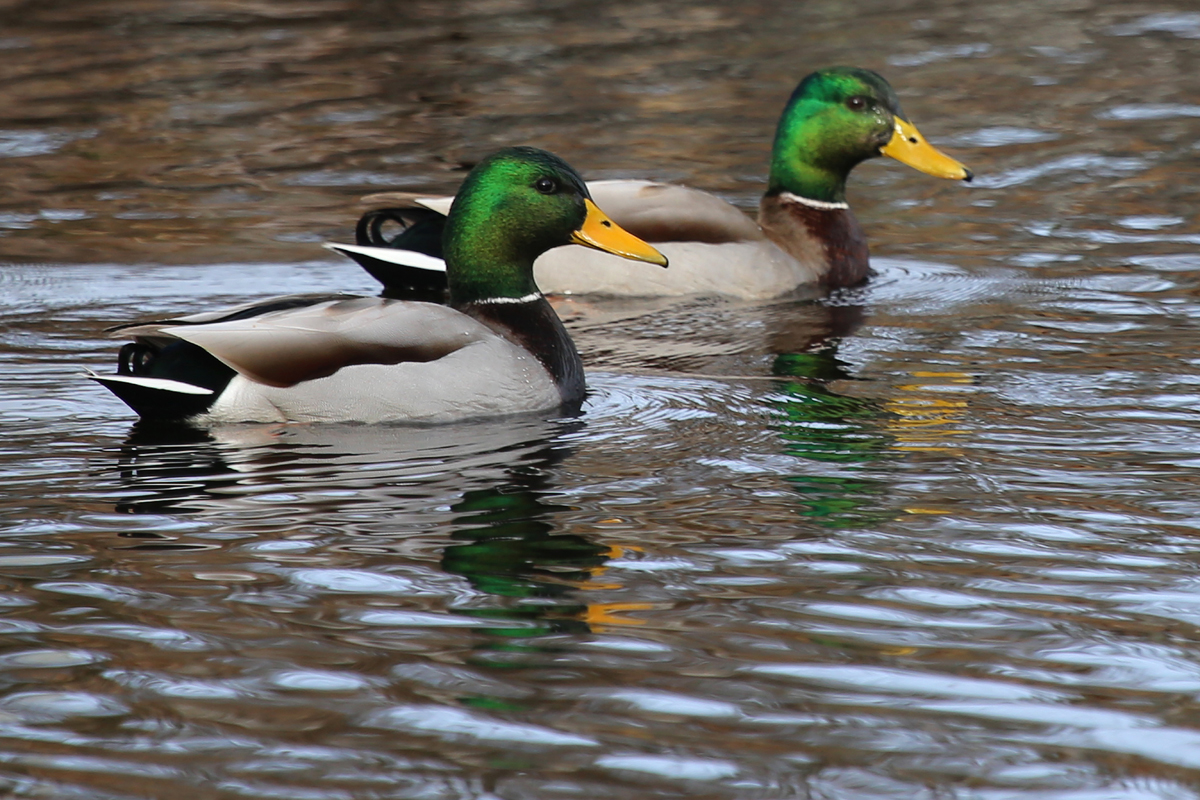
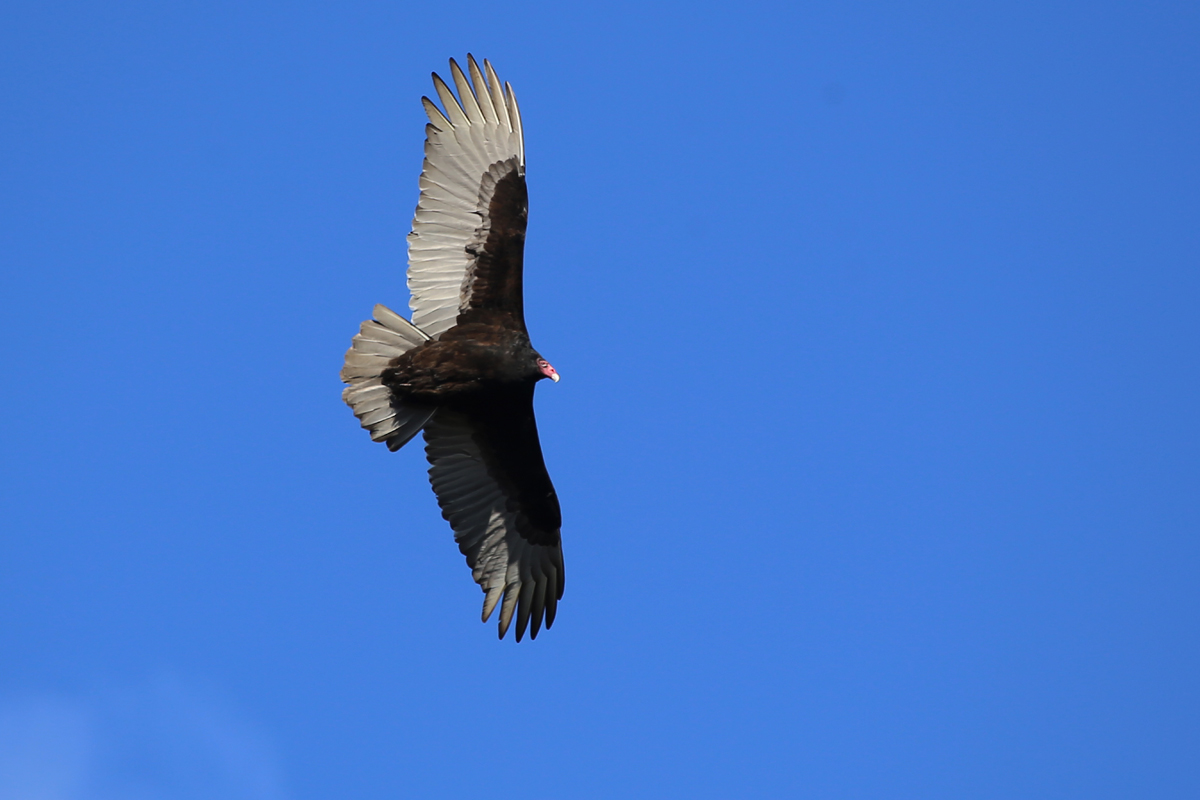
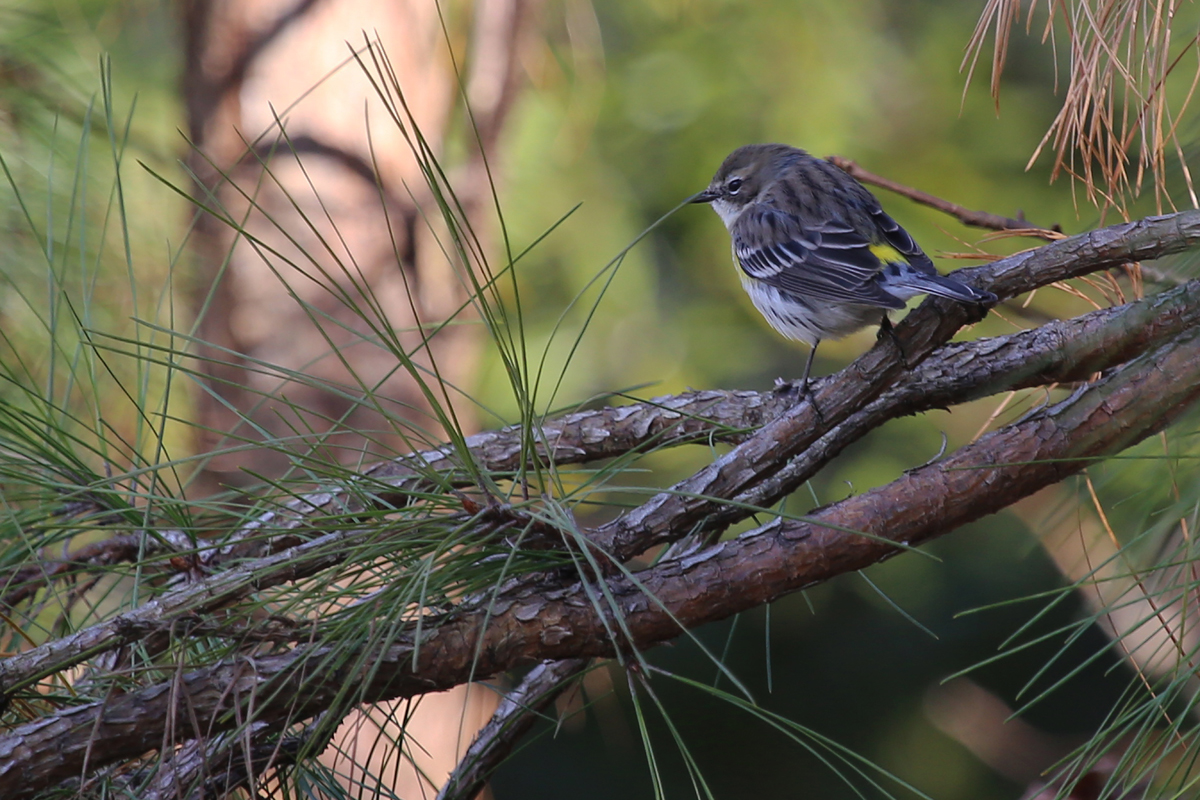

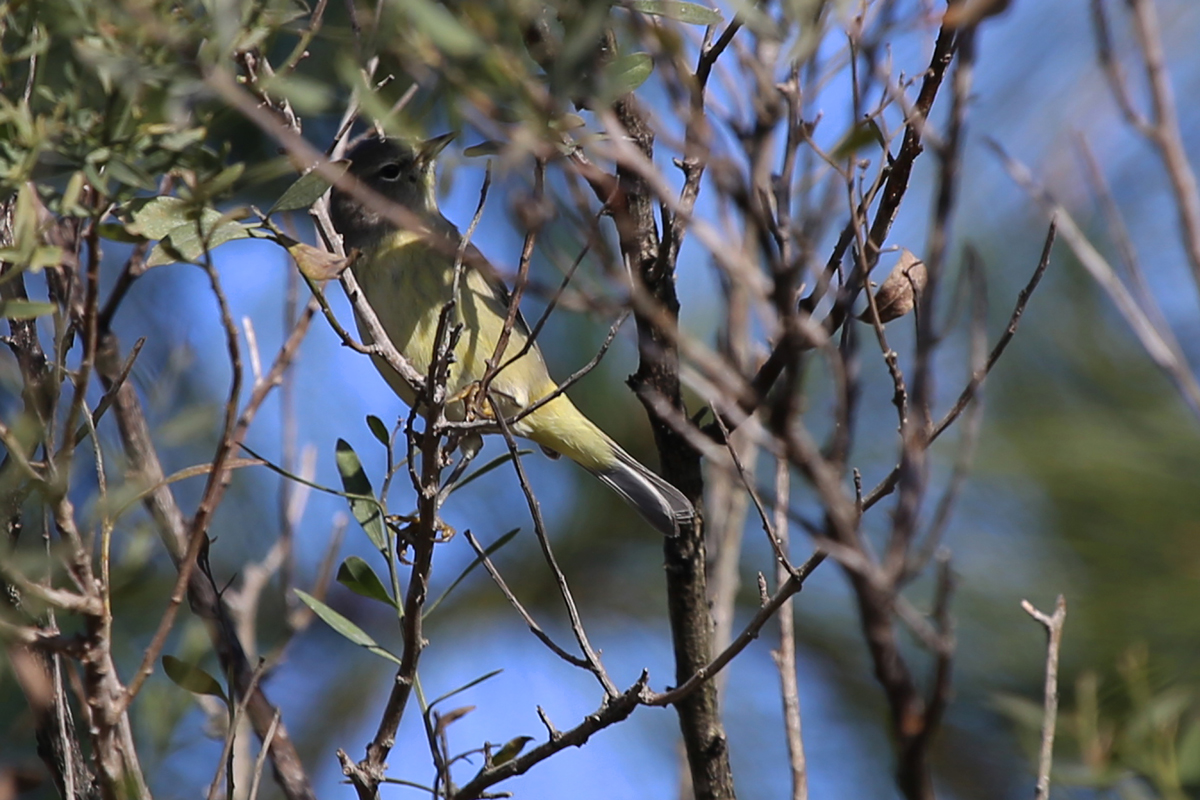
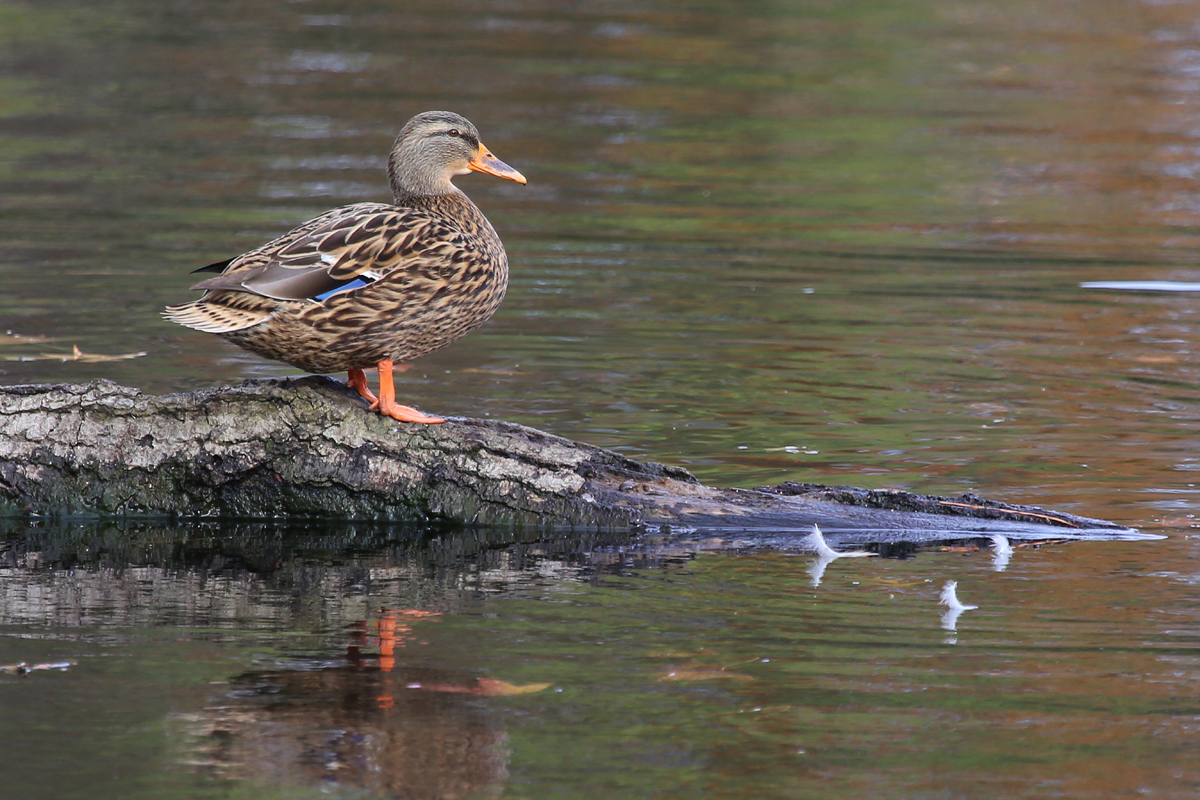
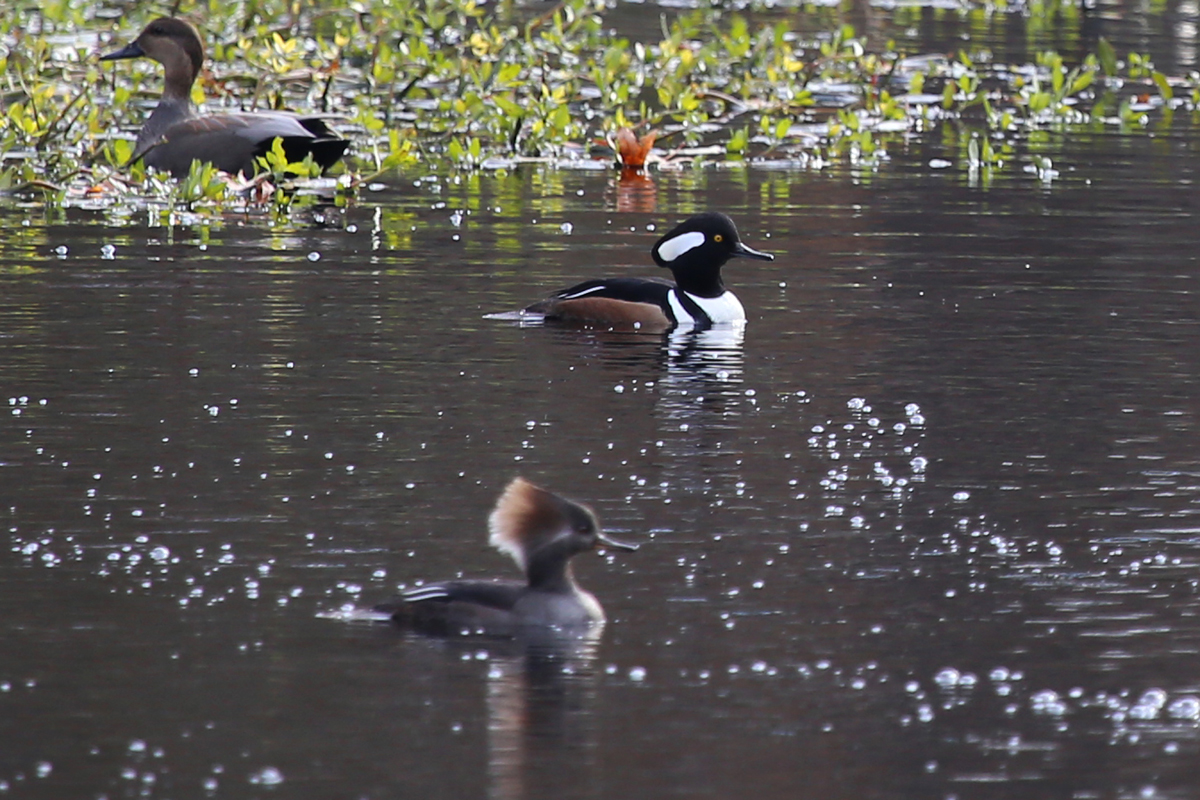
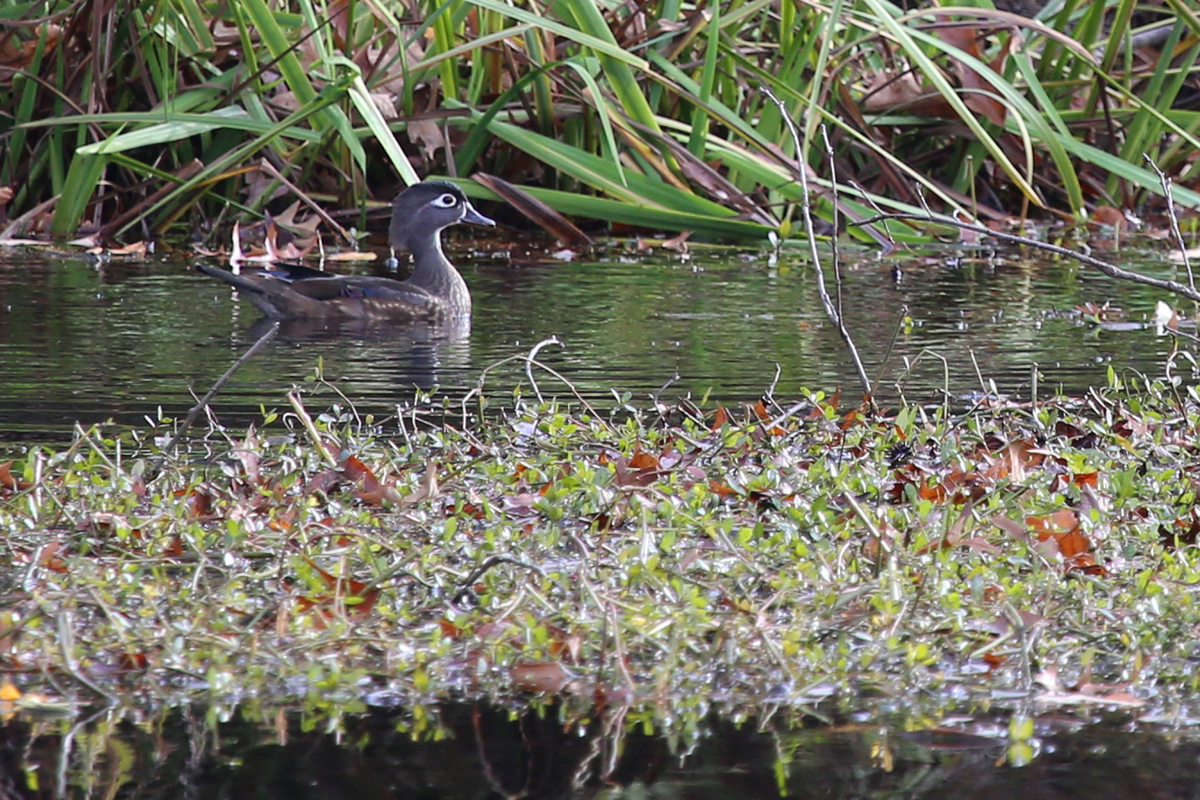
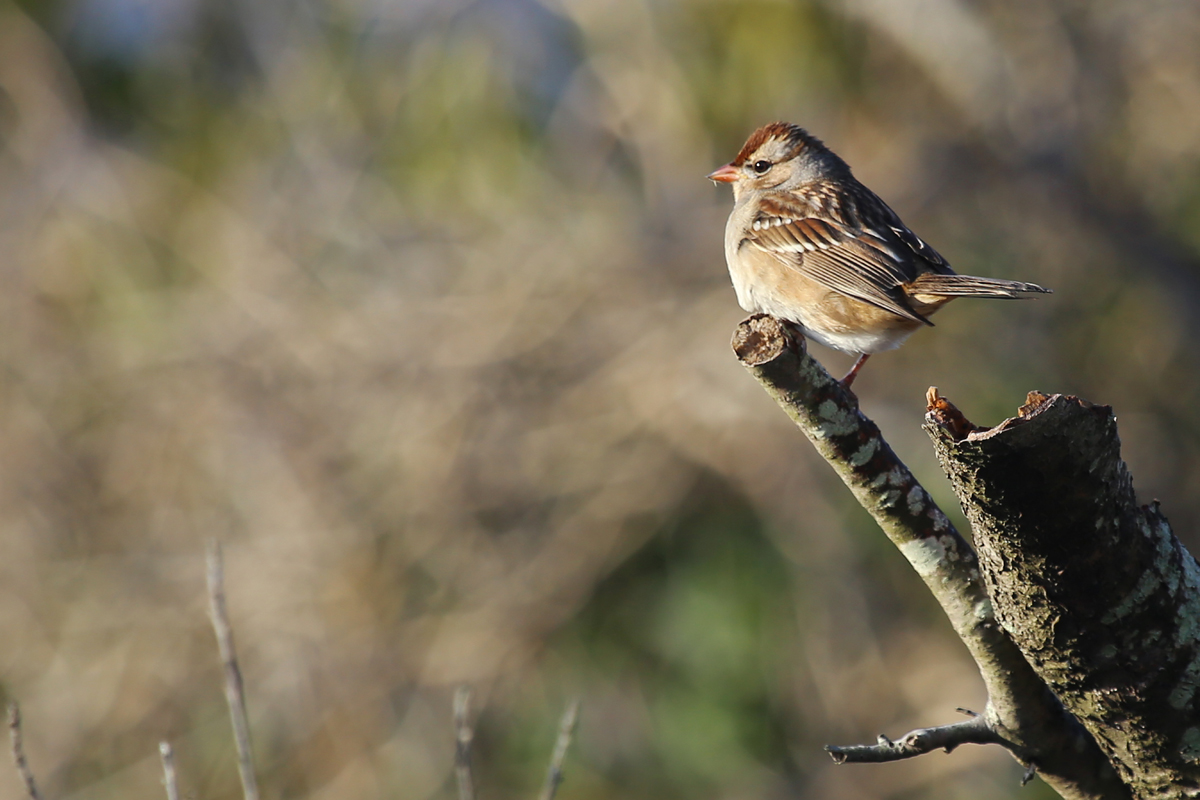
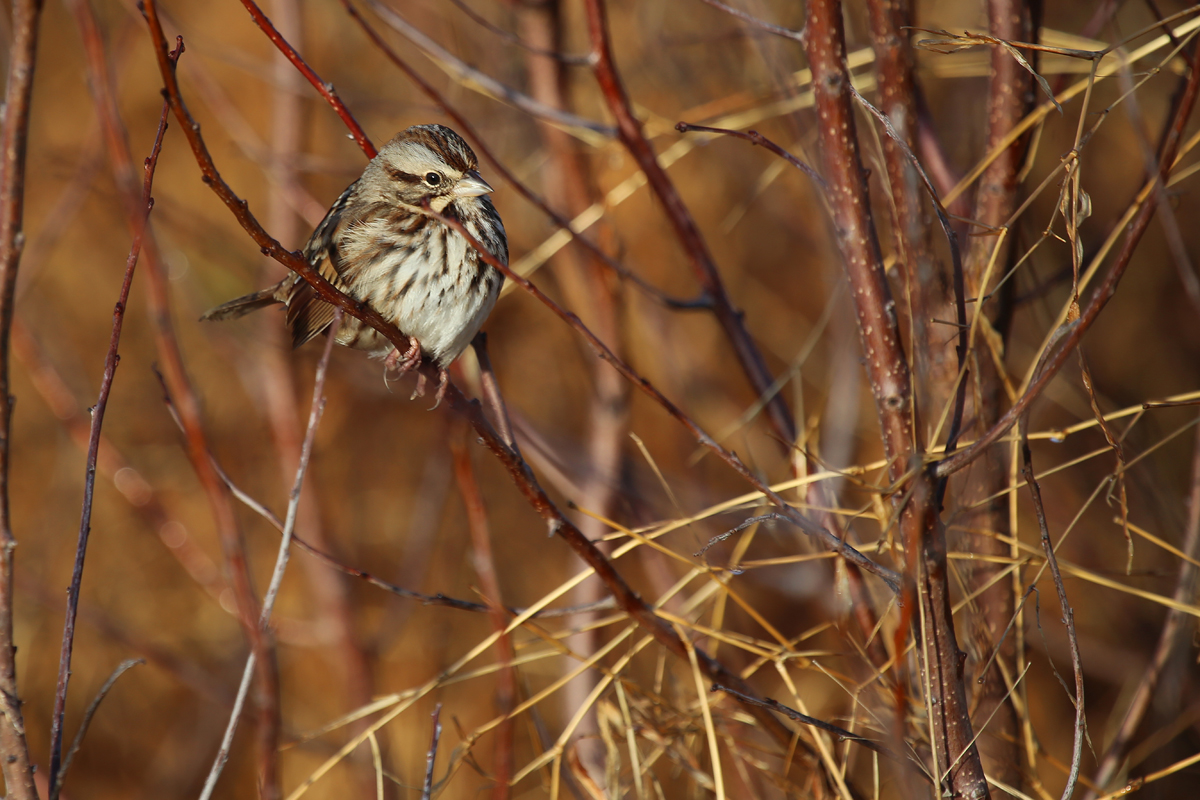

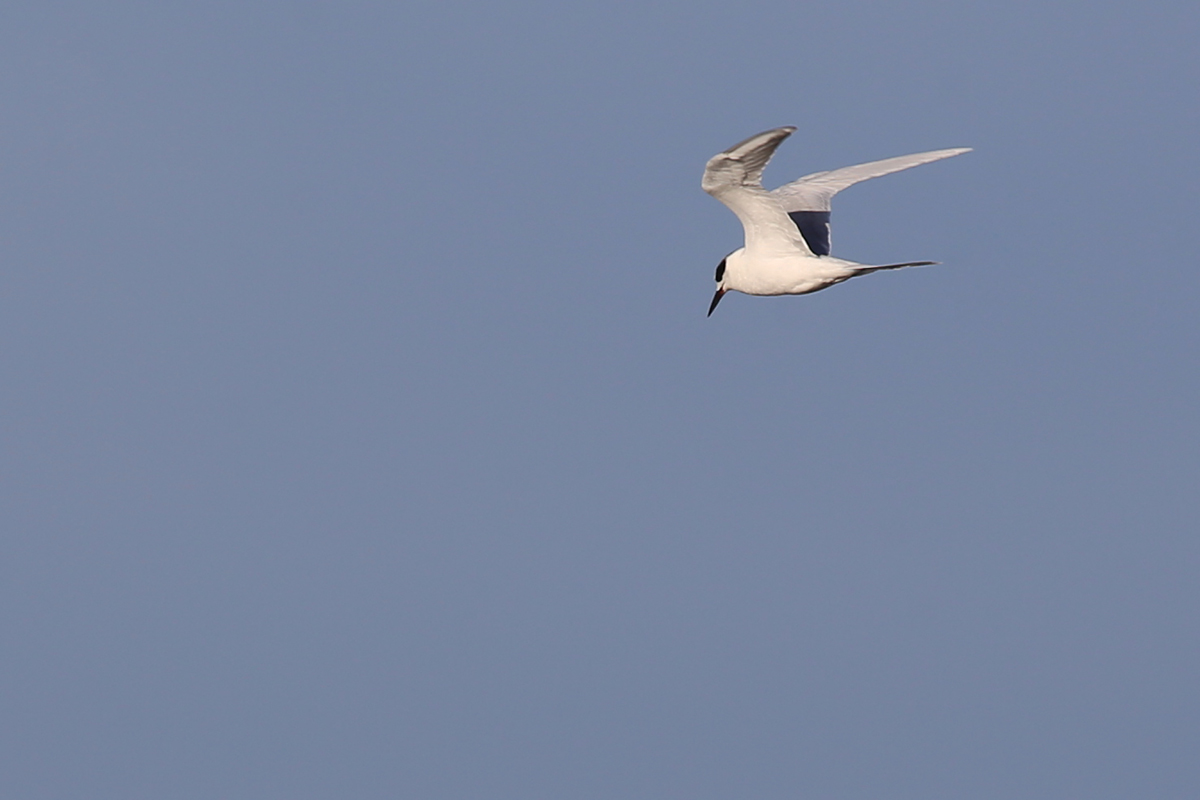
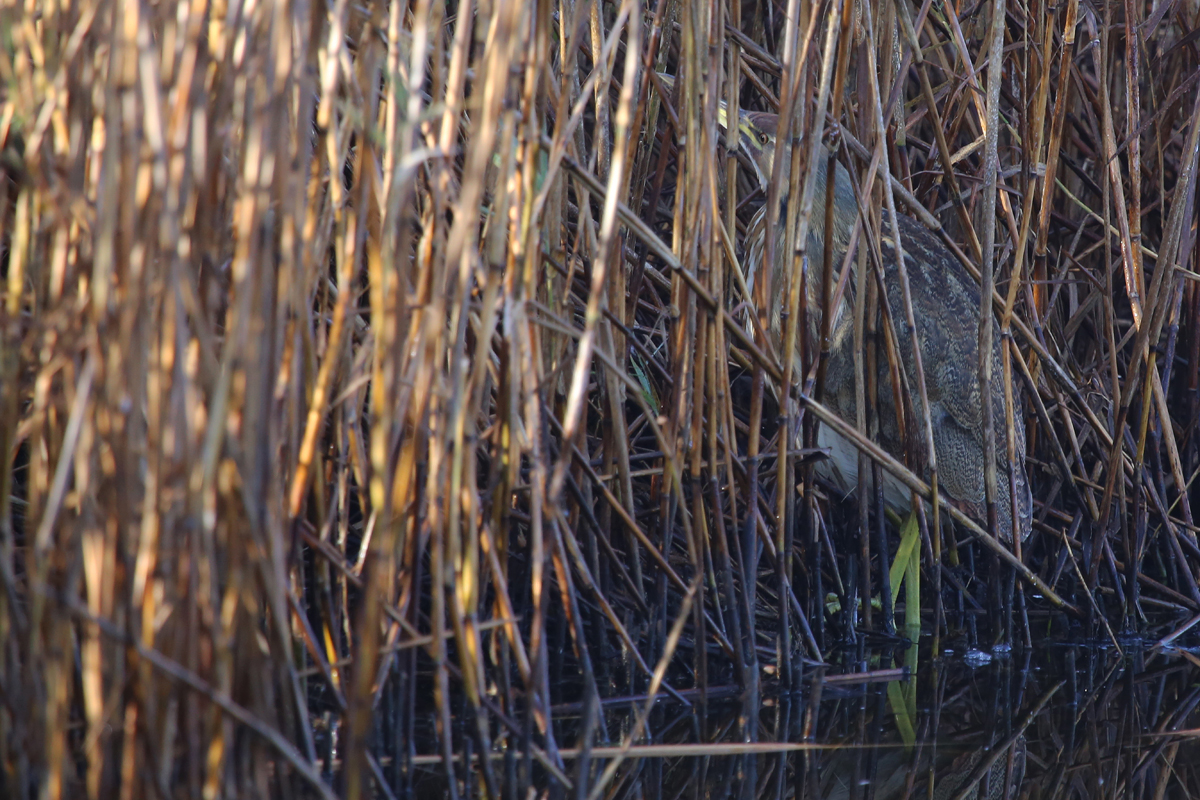
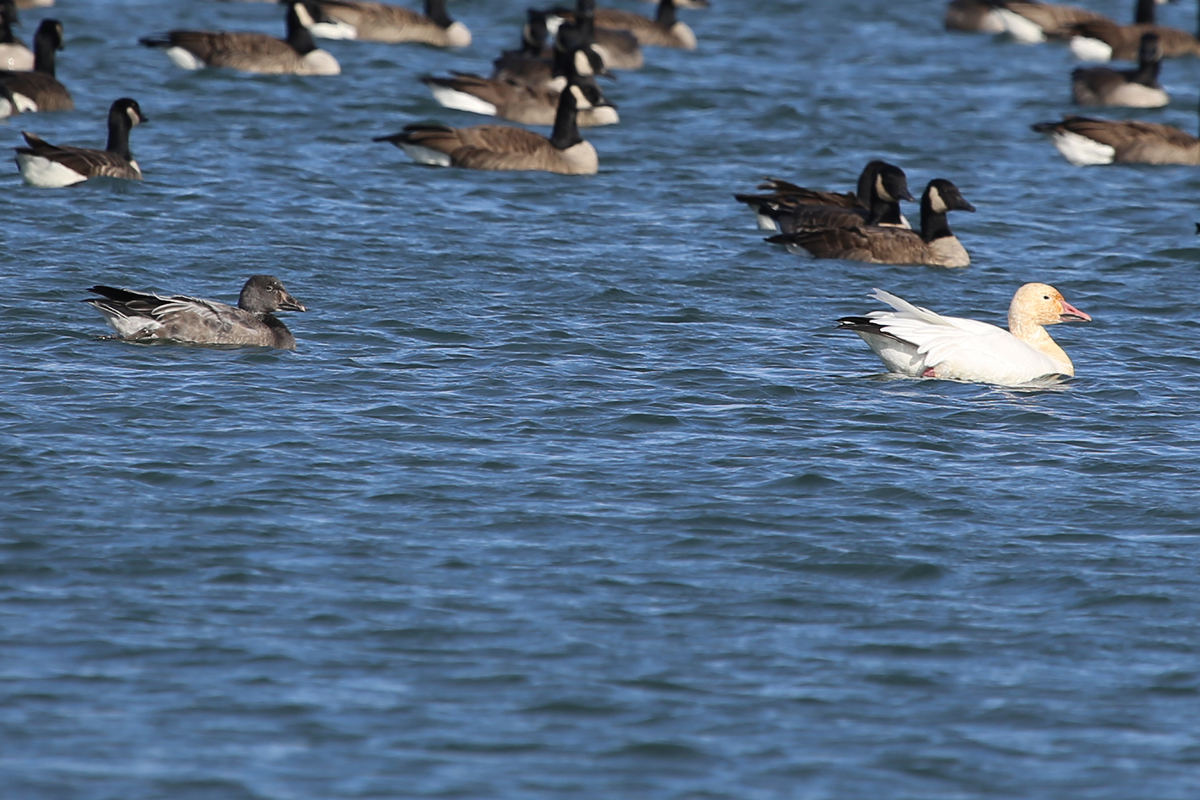
First-of-season arrivals this period were limited to once species, but a good one! A single Red-necked Grebe was observed from the second island of the Chesapeake Bay Bridge-Tunnel during a private field trip of the Carolina Bird Club on 17 Dec. This individual was logged at North Thimble Island by several members of the trip to eBird, including: Karen Hogan, Peggy Maslow, Ron Mclear, Steve Schulz & Pauline Sterin. At this point in the winter, new arrivals are difficult to come by, and essentially all the expected wintering species have already been logged. On the opposing side, we did have quite a few observations of species lingering beyond their typical departure dates. These included a group of up to 9 Cattle Egrets in southern Virginia Beach along Princess Anne Road on 11 Dec (1, Adam Bollinger & Jason Strickland; 6, Jeffrey Blalock & Clyde Wilson; 4, Rob Bielawski; 3, Kathy Spencer; 9, Loretta Silvia; 8, Matt Anthony & James Fox) and a single Cattle Egret at Camp Pendleton (Karen & Tom Beatty. An apparent wintering Ruby-throated Hummingbird continues to visit the feeder of a private residence in Alanton (Michelle Payne), with the last report being dated 16 Dec. Additionally, several late warbler species were observed during the period, including singles of Northern Parula (16 Dec / Haviland Dr. / Rob Bielawski), Yellow-breasted Chat (18 Dec / Back Bay NWR / Rob Bielawski) and Black-and-white Warbler (18 Dec / Salem Canal / Rose Chandler). Both the Chat & the Black-and-white Warbler are known to attempt wintering here in the southeast corner of the state, but there are very few records of Northern Parulas in December. The Gold Book specifies “about 8 records” known for December, though none of these have made it into eBird as of yet and this sighting is only the 3rd December record for the species in Virginia presently in the database. Lastly, two late Blue-gray Gnatcatchers were also observed at Camp Pendleton (20 Dec / Karen & Tom Beatty). This species sometimes lingers into late fall/early winter, but as with the Parula, December records don’t happen annually (though the species may indeed occur annually this late); this is only the 5th December report for Virginia Beach in eBird, and there are no January records listed, so perhaps something to shoot for as 2017 takes hold.
As to some other interesting species, the group of Snow Buntings at First Landing SP was not reported during this period, but, a single individual was observed at Back Bay NWR foraging around (and under!) the visitor center per the checklists submitted by Jeffrey Blalock, Bob Swiader & Clyde Wilson. Reports of Sedge Wrens (ph. Tamara Conklin) and American Bitterns continue to pour in from areas like Back Bay NWR & Princess Anne WMA, and Virginia Rail, Eastern Screech-Owl, Great Horned Owl & American Woodcock were also reported from Beasley Tract on 11 Dec. On 15 Dec, a group of 45 Redheads was observed off Sandy Bay Dr. (Timothy Barry), and several reports of Canvasback surfaced from Back Bay NWR. Lastly, an offshore, “six-pack” pelagic birding venture aboard the vessel, Top Notch departed Rudee Inlet early on 11 Dec, en route to Norfolk Canyon which sits at the continental shelf break (though technically in Northampton County waters & not Virginia Beach’s by eBird’s Closest Point of Land policy). The group of six (Matt Anthony, Arun Bose, James Fox, Kim Harrell, Ellison Orcutt & Beth Oristian) managed to spot healthy numbers of RED PHALAROPES & MANX SHEARWATERS but the highlight of the day was a single GREAT SKUA, the first seen in Virginia waters for quite some time (the last appears to be from 19 Jan 2013), and a great addition to the state list for the year 2016! Anyone interested in getting offshore during the winter months to seek out rarities should check out the Top Notch website.
SPECIES DOCUMENTED BY MEDIA and submitted to eBird for Virginia Beach during this period included: 11 DEC – Nelson’s Sparrow (Princess Anne WMA Beasley Tract / Jason Strickland); Great Blue Heron (Princess Anne WMA Beasley Tract / Clyde Wilson); Brown Pelican, Yellow-bellied Sapsucker & Baltimore Oriole (Lake Windsor / Lisa Rose); ROSS’S GOOSE (Sherwood Lakes / Jason Strickland); Tundra Swan, Mallard, Pied-billed Grebe, Brown Creeper, Winter Wren, Ruby-crowned Kinglet & Orange-crowned Warbler (Lake Tecumseh / Mary Catherine Miguez); ROSS’S GOOSE & Canada Goose (Sherwood Lakes / Jeffrey Blalock); ROSS’S GOOSE (Sherwood Lakes / Kathy Spencer); ROSS’S GOOSE (Sherwood Lakes / Rob Bielawski); Cattle Egret (Princess Anne Rd. / Clyde Wilson); Cattle Egret (Princess Anne Rd. / Jeffrey Blalock); Turkey Vulture, Northern Mockingbird, Orange-crowned Warbler & Yellow-rumped Warbler (Princess Anne WMA Whitehurst Tract / Rob Bielawski); Tundra Swan, Sanderling, Gray Catbird, LARK SPARROW & White-crowned Sparrow (Back Bay NWR / Jeffrey Blalock); Nelson’s Sparrow (Princess Anne WMA Beasley Tract / Brandon Holland); Wood Duck, Mallard, Northern Shoveler & Hooded Merganser (Kings Grant Lakes / Rob Bielawski); Canada Goose, Black Scoter, Brown Pelican & Cattle Egret (Camp Pendleton / Karen & Tom Beatty); GREATER WHITE-FRONTED GOOSE & CACKLING GOOSE (Firefall Dr. / Ellison Orcutt); LE CONTE’S SPARROW (Princess Anne WMA Beasley Tract / Kim Harrell); LE CONTE’S SPARROW (Princess Anne WMA Beasley Tract / James Fox); LE CONTE’S SPARROW (Princess Anne WMA Beasley Tract / Matt Anthony). 13 DEC – GREATER WHITE-FRONTED GOOSE & ROSS’S GOOSE (Haviland Dr. / Ryan Graves). 14 DEC – Hooded Merganser & American Coot (Stumpy Lake NA / Karen & Tom Beatty); GREATER WHITE-FRONTED GOOSE, Snow Goose & ROSS’S GOOSE (Haviland Dr. / Nancy Barnhart); GREATER WHITE-FRONTED GOOSE (Haviland Dr. / Mary Catherine Miguez); GREATER WHITE-FRONTED GOOSE & Snow Goose (Haviland Dr. / Karen & Tom Beatty); Common Eider & Brown Pelican (Rudee Inlet / Mary Catherine Miguez); Common Eider (Rudee Inlet / Karen & Tom Beatty); Orange-crowned Warbler (Sandy Bay Dr. / Timothy Barry); 16 DEC – Blue Jay, Carolina Chickadee, Carolina Wren, American Robin, Northern Mockingbird, European Starling, Orange-crowned Warbler, Dark-eyed Junco, White-throated Sparrow & Song Sparrow (Prince Phillip Dr. / Ron Furnish); Yellow-bellied Sapsucker, Carolina Chickadee, Red-breasted Nuthatch, White-breasted Nuthatch, Carolina Wren, Pine Warbler, Dark-eyed Junco, White-throated Sparrow & Baltimore Oriole (Lago Mar / Mary Catherine Miguez); Red-winged Blackbird (Robinson Rd. / Karen & Tom Beatty); Red-shouldered Hawk & American Kestrel (Muddy Creek Rd. / Karen & Tom Beatty); GREATER WHITE-FRONTED GOOSE & Northern Parula (Haviland Dr. / Rob Bielawski); Black Scoter (Rudee Inlet / Rob Bielawski). 17 DEC – Sedge Wren, Orange-crowned Warbler, Common Yellowthroat, LARK SPARROW & White-crowned Sparrow (Back Bay NWR / Tamara Conklin); Red-necked Grebe (North Thimble Island / Karen Hogan); Bufflehead & Bald Eagle (First Landing SP / Karen & Tom Beatty); White-winged Scoter (South Thimble Island / Karen Hogan); Bufflehead & Bonaparte’s Gull (Fort Story / Karen & Tom Beatty); 18 DEC – Canvasback, Redhead, Ring-necked Duck, American Bittern, Northern Harrier, American Coot, Forster’s Tern, Orange-crowned Warbler, Yellow-breasted Chat, White-crowned Sparrow & Song Sparrow (Back Bay NWR / Rob Bielawski); LE CONTE’S SPARROW (Princess Anne WMA Beasley Tract / Jason Strickland); LE CONTE’S SPARROW (Princess Anne WMA Beasley Tract / Lisa Rose); Black-and-white Warbler (Salem Canal / Rose Chandler); LE CONTE’S SPARROW (Princess Anne WMA Beasley Tract / Rob Bielawski); GREATER WHITE-FRONTED GOOSE & CACKLING GOOSE (Sherwood Lakes / Jason Strickland); GREATER WHITE-FRONTED GOOSE, Snow Goose & CACKLING GOOSE (Sherwood Lakes / Mary Catherine Miguez); GREATER WHITE-FRONTED GOOSE, Snow Goose & CACKLING GOOSE (Sherwood Lakes / Rob Bielawski); GREATER WHITE-FRONTED GOOSE & Snow Goose (Sherwood Lakes / Karen & Tom Beatty); GREATER WHITE-FRONTED GOOSE, Snow Goose, CACKLING GOOSE, Tundra Swan & Redhead (Sherwood Lakes / Pamela Monahan); GREATER WHITE-FRONTED GOOSE, Tundra Swan & Redhead (Sherwood Lakes / Mary Catherine Miguez). 19 DEC – Common Loon & Horned Grebe (Sherwood Lakes / Karen & Tom Beatty); 20 DEC – Red-breasted Nuthatch, Northern Cardinal & Painted Bunting (Private Residence / Mary Catherine Miguez); Brown Creeper & Hermit Thrush (Camp Pendleton / Karen & Tom Beatty); GREATER WHITE-FRONTED GOOSE, ROSS’S GOOSE, COMMON MERGANSER & Peregrine Falcon (Sherwood Lakes / Karen & Tom Beatty); ROSS'S GOOSE (Sherwood Lakes / Pamela Monahan).
LOOKAHEAD: Late December brings many reasons for excitement to birders. First and foremost, the holiday season is in full swing, and time spent with family & friends… as well as additional time away from work often becomes common. Many of us (myself certainly included) will choose to use a part of this time to seek out birds, perhaps while staying in other parts of the state that we might not get to bird very often. For an amusing take on this very subject, please check out this posting over at The Birder’s Conundrum (credit for sharing this goes to Karen Beatty). In light of that article’s Note #2, the Christmas Bird Count season is upon us, and there are likely to be some interesting finds given the caliber of individuals who typically take part in these organized efforts. For information on local counts (of which the Back Bay & Little Creek CBCs occur in Virginia Beach), check the CBC page of the VSO website, by clicking here. Additionally this coming period, 21 Dec brings us the Winter Solstice, the day with the shortest duration of light between official sunrise & sunset. From that point moving forward, the days will begin to get longer, though at first this change is very miniscule as length of day is similar to the tides in the mathematics behind them. The change per day length is always slowest near the turning points so it might not be noticeable for some time. As to the local birding, the goose flock moving around southern Virginia Beach is certainly still worth tracking, and anyone interested in notching off a 6-goose-species day might still have a shot at it, with Brant seeming the most difficult to nail down right now (which seems a tad ridiculous given several others species are much more rare)! Any large grouping of blackbirds is worth focusing on as well, even if it means driving after them when sighted racing over a field in southern Virginia Beach, and observers should focus on picking out a YELLOW-HEADED BLACKBIRD if present among the 10,000 birds that can be contained in these groups. As with last period, late December could afford seawatchers with our first documented GLAUCOUS, BLACK-HEADED or ICELAND GULLS of the season, and rare ducks like KING EIDERS and HARLEQUIN DUCKS are always a possibility this time of year as well. Razorbills should also be watched for, and a few are observed every winter from shore, mostly from Rudee Inlet, Fort Story, South Thimble Island & Little Island Park. With the drop in temperatures comes the potential for northerly species making their way into our region. In fact, now that winter has really arrived, it is worth noting that a couple years back in a VA Birding Listserv post, Ned Brinkley brought up the fact that the variety and numbers of waterfowl we can expect to see on the coast is linked to the amount of ice cover on the Great Lakes, very far from here. Apparently as these massive freshwater bodies of water freeze, waterfowl that winter on their surface are forced eastward to the ocean, seeking out suitable wintering grounds where food items are still plentiful, and reachable. Fortunately in this day & age, there is a website run by NOAA that alerts us to the % Ice Cover currently being observed on the lakes. It is worth checking in on this website, and then clicking on the graphic in the middle of the page. On this graphic, there is a listing of the “Great Lakes Total Ice Cover” and essentially, the higher this rises, the more you should be on the lookout for influxes of waterfowl around Virginia Beach! In the winters of 2013-14 & 2014-15, this number rose up to about 92.5% & 88.8% (respectively), which is why we saw large numbers of Red-necked Grebes and White-winged Scoters throughout those winters here along the coast. This past winter (2015-16), the percentage only reached 33.8%, so we expectedly didn’t see the same kind of numbers we’d grown to expect. So, check that site out often moving forward, through at least March! For the next entry to the journal (for late December), I may be a couple of days slower as I’ll likely be spending all my free time on 1-2 Jan out birding to kick off my own 2017 year list, so if you don’t see an entry posted as quickly as usual, don’t fret, it’ll be there as soon as it can be. Lastly, I’d just like to say to everyone…please enjoy the holiday season, and make sure to still get out and see some birds!
Next Entry | Entry Index | Previous Entry
For more information on this thrice-monthly Birding Blog, please check out the Journal Overview Page on the website. It provides background information as to what sightings are considered for the blog, details about the format of the blog, and it will likely answer many other questions that readers might be wondering about as well! As always, thank you for reading, and please leave me a comment below (you may use your Facebook, Gmail or other accounts to easily do so), or just click the Heart icon to the lower right of this post to let me know you stopped in!